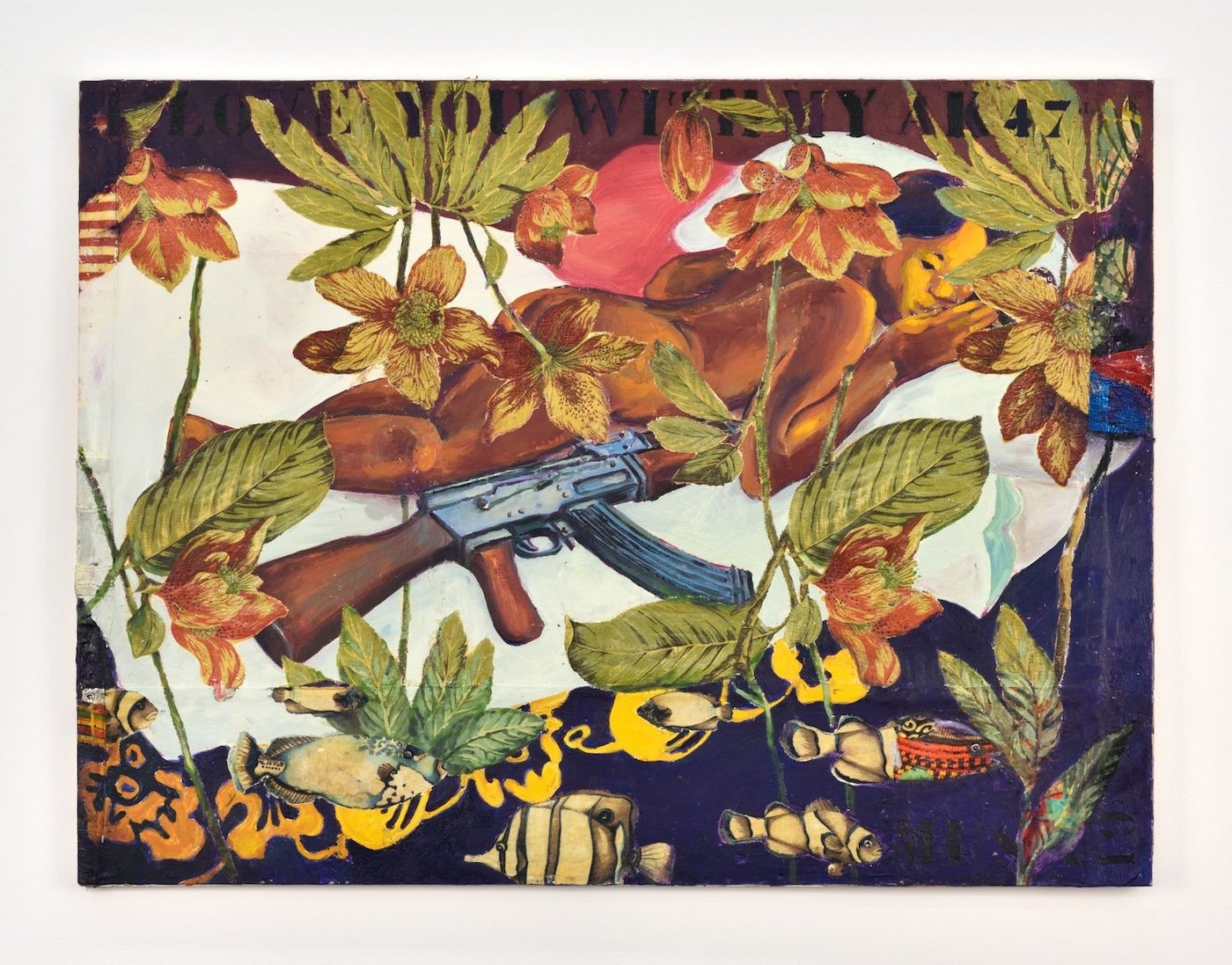Sekhukhuni's Realpolitik and Virtual Real

21 February 2014
Magazine C& Magazine
5 min read
As a scrutiner of South Africa’s contemporary condition, Bogosi Sekhukhuni cuts through the fat of national identity and mirrors it to digital myth-making. In his public performance titled Fukin’ Ridiculous at a tavern in inner-city Johannesburg, he ate sushi off a blow-up doll to reflect on the excess of the black middle class. Sekhukhuni has …
As a scrutiner of South Africa's contemporary condition, Bogosi Sekhukhuni cuts through the fat of national identity and mirrors it to digital myth-making. In his public performance titled Fukin' Ridiculous at a tavern in inner-city Johannesburg, he ate sushi off a blow-up doll to reflect on the excess of the black middle class. Sekhukhuni has also madethe Mail & Guardian's top 200 list of young South Africans in the arts & culture category. He has exhibited at theUniversity of Johannesburg's FADA andStevenson gallery as part of the collectiveCUSS. He lets us in on his highly aestheticised works and narratives explored in recent works.
Kagiso Mnisi: Observing your work ever since Fukin' Ridiculous and with the CUSS group, the mere attempt to give it uninformed reportage would surely result in an outright assault. But what ideas would you say do you explore through the work?
Bogosi Sekhukhuni: The art objects and ideas I create are representations of questions and debates I had with myself about the nature of life and my immediate experiences. Informed by this, the content follows an open-ended and often cyclic narrative. I mostly spend time thinking about the future of the world because it’s an indefinite reality that is up for grabs. In the present there is a lot of the past along with it, the physical traps that can distract one from creating solutions. I think interesting solutions can come from a future-based perspective. These ideas are what I interrogate in my work right now, threading them through the diverse subject matter. From an aesthetic point of view, my work does feed from what the collective CUSS group does by exploring the future direction of visual arts and engaging with a post-modern aesthetic.
Dream 4, Bogosi Sekhukhuni, 2013.
KM: As an artist whose work has sometimes touched on the current public discourse, what can you say about your generation's outlook on contemporary South African politics?
BS: I think nobody, not just young people, takes politics seriously enough. I've also come to understand this as a healthy attitude that can be utilised to come up with ideas for an alternative structuring of social life. For instance, the informality that exists on the fringes of our social grids is increasingly becoming a force to be reckoned with. But mostly I think technology is the way out for black youth, and not necessarily politics.
KM: What are your views on South Africa's interaction with the rest of the continent on both a social and an artistic level?
BS: I think we need to break away from the geo-psychological prisons that imperial forces put on the continent at the beginning of the 19th century. Not as a return to some imagined African utopia, but I think increased mutual cultural exchange will present solutions and possibilities. This will obviously take many generations to happen.
KM: You have been preparing for your grad show at FADA. What will you be exploring for that?
BS: In my non-elective graduation show, I will be presenting a drawing, some videos and a sculptural environment that I hope to develop further, working primarily with video and sculpture. A conversation which I have had with myself is through non-representative mark making. It is an exploration of the phenomenon that the internet can be equated to a thinking process since both are interlinked by thoughts and ideas. To represent a 3D digital interface, I used bubble wrap. That developed into a theme of how information can create something which is organic and malleable. Some of this stems from my research into nanotechnology and the idea of DNA being a digital code.
Dream Diary 1, Bogosi Sekhukhuni, 2013.
KM: Your video installation is a visceral teleportation to the genesis of a democratic South Africa. In what ways did you use this as point of departure to capture the ideologies that have emerged ever since then?
BS: Through video I attempt to recreate the cave scene from Vicky Sampson's famed music video "My African Dream." The recreation of the medieval undertones in Sampson's video are used to house dream episodes I have been working on. The work is a reflection on the idea of national consciousness of the mid-1990s. Ever since 1994, one can almost equate the interests of South African presidents to the national consciousness. Nelson Mandela's legacy is firmly rooted in the idea of an African dream. Popular culture took cue from this as with Sampson's song. In the case of Thabo Mbeki's administration, the rhetoric of an African renaissance saw the emergence of afrocentrism through music, inner-city culture haunts, clothing and magazines. Bongo Maffin, Horror Cafe, Sun Goddess and Y Mag are some examples. Fast forward to the current presidency of Jacob Zuma, and you find a less euphoric air of pessimism in the wake of restrictions related to social mobility via E-tolls and tax payer's money being used to build a luxurious homestead for the head of state. That is where we are now.
For more on Bogosi Sekhukhuni:http://bogosisekhukhuni.tumblr.com/ and http://www.cussgroup.com/blog/
Kagiso Mnisi is a writer and cultural producer from Johannesburg, South Africa. He is also co-founder ofUnity Creative Development Foundation which delivers media and digital literacy in the peri-urban areas of Johannesburg.
Read more from

Confronting the Absence of Latin America in Conversations on African Diasporic Art

On Exile, Amulets and Circadian Rhythms: Practising Data Healing across Timezones
Read more from

Jazsalyn’s A(spora): On the Gullah Geechee Corridor



